
Ninfeo di Ulisse e Polifemo: A Mythological Grotto in Rome
Explore the Ninfeo di Ulisse e Polifemo in Rome, where ancient mythology meets breathtaking art and serene gardens.
The Ninfeo di Ulisse e Polifemo, located on Viale Serapide in Rome, is a captivating tourist attraction that blends ancient mythology with artistic design. Dedicated to the tales of Odysseus (Ulisse) and the Cyclops Polyphemus, this enchanting site features intricate sculptures and fountains within beautifully designed gardens.
A brief summary to Ninfeo di Ulisse e Polifemo
- Viale Serapide, Rome, Metropolitan City of Rome Capital, 00184, IT
- Visit website
Local tips
- Visit early in the morning for a quieter atmosphere and better photo opportunities.
- Wear comfortable walking shoes, as exploring the area involves a fair amount of walking.
- Combine your visit with a tour of the nearby Domus Aurea to maximize your experience of ancient Rome.
Getting There
-
Public Transport
To reach the Ninfeo di Ulisse e Polifemo via public transport, the closest metro station is Colosseo on Line B. From there, it's approximately a 7-minute walk to Viale Serapide. Alternatively, several bus lines stop near Viale Serapide, including 105, 51, 714, 75, and 85. A single bus or metro ticket costs €1.50.
-
Walking
From the Colosseum, walk up the Oppian Hill towards the Colle Oppio park. The entrance to the Domus Aurea is within the park, and the Ninfeo di Ulisse e Polifemo is located on Viale Serapide. The walk is approximately 7 minutes.
-
Taxi/Ride-sharing
Taxis and ride-sharing services like Uber are readily available in Rome. A taxi ride from the city center to Viale Serapide typically costs between €8 and €15, depending on traffic and the exact starting point. Note that there may be surcharges for night travel or additional luggage.
Discover more about Ninfeo di Ulisse e Polifemo
Iconic landmarks you can’t miss
Monument of Alfredo Oriani
0.1 km
Discover the Monument of Alfredo Oriani in Rome, a stunning historical landmark celebrating Italy's literary heritage amidst vibrant city life.
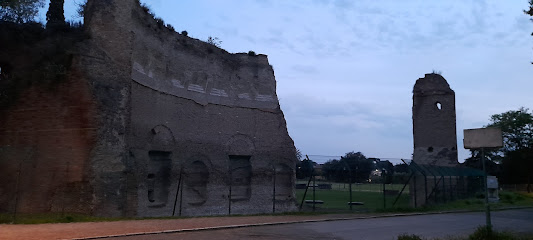
Via Marco Aurelio, 30
0.3 km
Discover the historical charm and vibrant culture of Via Marco Aurelio in Rome, a captivating street offering rich experiences and authentic Italian delights.
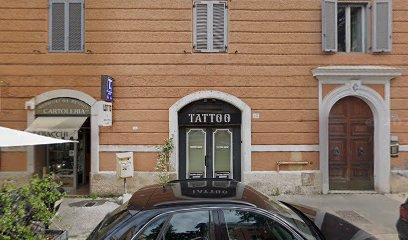
L.go Gaetana Agnesi
0.3 km
Experience the serene beauty of L.go Gaetana Agnesi, a charming square in Rome perfect for relaxation and cultural exploration.

Colosseo
0.3 km
Explore the awe-inspiring Colosseum, a marvel of ancient architecture and a symbol of Rome's rich history, attracting millions of tourists each year.

Piazza del Colosseo, 17
0.3 km
Explore the grandeur of the Colosseum, Rome's iconic amphitheater steeped in history and architectural brilliance, a must-visit for every tourist.
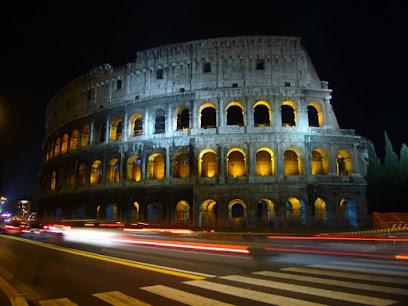
Piazza del Colosseo
0.3 km
Explore the vibrant atmosphere and rich history at Piazza del Colosseo, the gateway to Rome's ancient wonders.

Base of the Statue of Nero
0.4 km
Discover the rich history and grandeur of the Base of the Statue of Nero, a significant historical landmark near the iconic Colosseum in Rome.

Via del Colosseo & Largo Gaetana Agnesi
0.4 km
Explore the vibrant intersection of history and modern life at Via del Colosseo & Largo Gaetana Agnesi in Rome, where ancient landmarks meet contemporary culture.
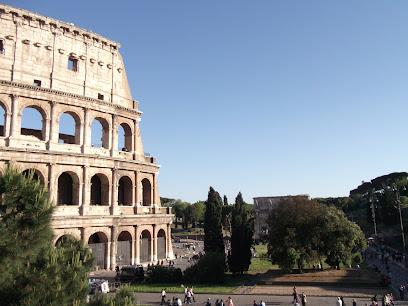
Basilica of San Pietro in Vincoli
0.4 km
Explore the exquisite Basilica of San Pietro in Vincoli, home to Michelangelo's Moses, in the heart of Rome's rich history and culture.
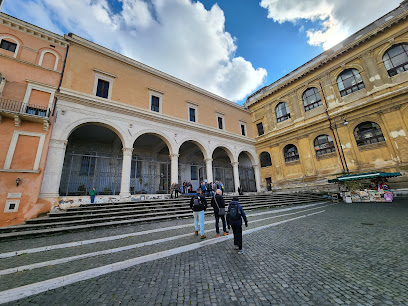
Arch of Constantine
0.4 km
Discover the Arch of Constantine, an ancient triumphal arch that celebrates Rome's rich history and stands as a majestic symbol of victory.
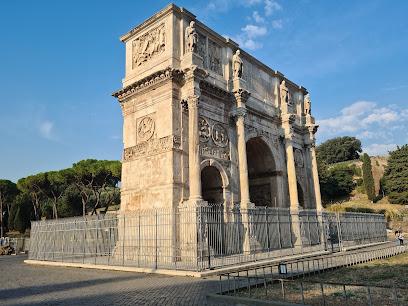
Torre Dei Borgia
0.5 km
Discover the historical grandeur of Torre Dei Borgia, a must-visit landmark in the heart of Rome, showcasing the rich legacy of the Borgia family.
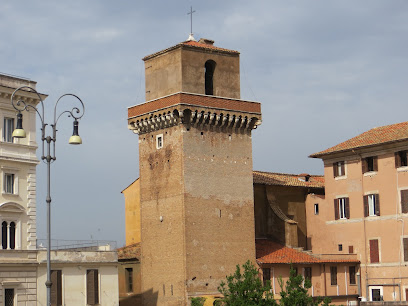
Via Sacra
0.5 km
Discover the historic Via Sacra, an iconic pathway in Rome that showcases ancient ruins and the heart of Roman civilization.
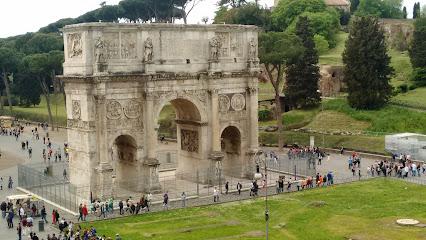
Piazza della Suburra
0.5 km
Experience the vibrant atmosphere and rich history of Piazza della Suburra, a hidden gem in the heart of Rome, perfect for cultural exploration and relaxation.

Basilica Santi Giovanni e Paolo
0.5 km
Discover the tranquil beauty of Basilica Santi Giovanni e Paolo, an architectural marvel and historical treasure in the heart of Rome.

Colosseo view point
0.5 km
Discover the stunning views of the Colosseum from the Colosseo Viewpoint, a must-visit historical landmark in the heart of Rome.
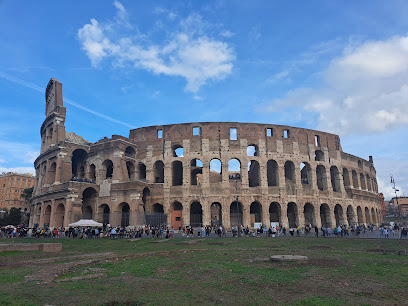
Unmissable attractions to see
Sala di Achille a Sciro
0.0 km
Explore the captivating Sala di Achille a Sciro in Rome, a stunning showcase of ancient frescoes and a glimpse into Nero's luxurious palace.

Domus Aurea
0.0 km
Explore the Domus Aurea in Rome, an archaeological museum revealing the opulence of Emperor Nero's lavish palace, a must-see for history lovers.

Roma Domus Aurea
0.1 km
Discover the opulent ruins of the Domus Aurea, Emperor Nero's Golden House, a must-visit archaeological marvel in the heart of Rome.
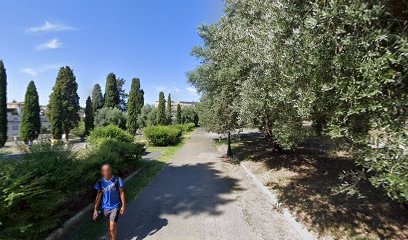
Ludus Magnus
0.1 km
Discover the remnants of gladiatorial training at Ludus Magnus, an archaeological gem in the heart of Rome, revealing the fierce history of ancient combat.
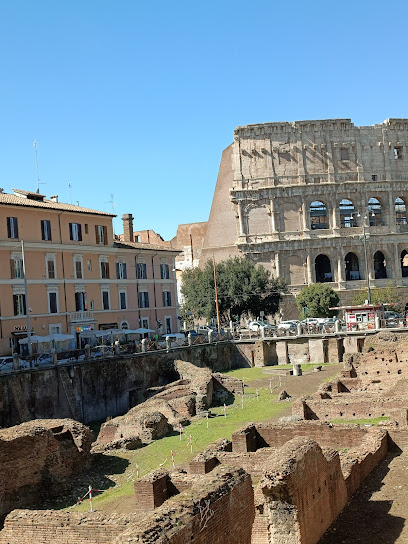
Murale di Raffaella Carrà
0.1 km
Explore the vibrant Murale di Raffaella Carrà in Rome, a stunning tribute to the beloved Italian icon and a must-visit for art and culture enthusiasts.

Parco del Colle Oppio
0.1 km
Discover the serene beauty and rich history of Parco del Colle Oppio, a hidden gem in the heart of Rome, complete with stunning views and lush gardens.
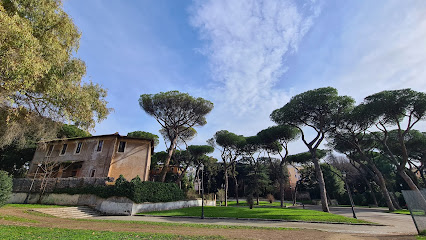
Roma STARBIKE - Rome eBike Tours & Experiences
0.2 km
Experience the beauty of Rome through guided eBike tours, visiting iconic landmarks while enjoying the freedom of cycling.

Baths of Trajan
0.2 km
Explore the magnificent Baths of Trajan, an ancient Roman marvel showcasing stunning mosaics and architectural grandeur in the heart of Rome.
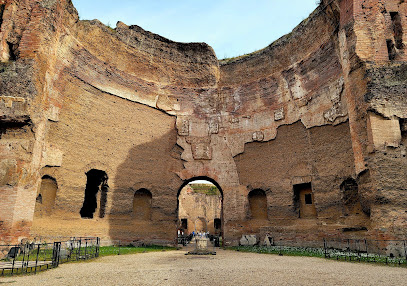
Basilica of San Clemente
0.2 km
Discover the Basilica of San Clemente, a stunning blend of art, history, and spirituality in the heart of Rome, showcasing centuries of architectural evolution.

Terme di Tito
0.2 km
Discover the ancient ruins of Terme di Tito, an exquisite historical landmark in Rome, showcasing the grandeur of Roman baths and rich cultural heritage.
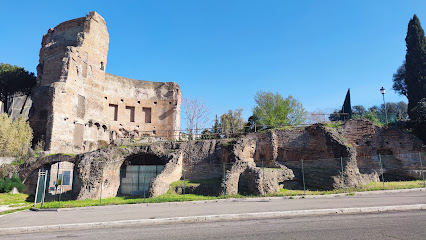
Colosseum
0.3 km
Explore the Colosseum, an architectural marvel and historical landmark that brings the grandeur of ancient Rome to life.

Giardinetto del Monte Oppio
0.3 km
Discover the tranquil beauty of Giardinetto del Monte Oppio, a serene garden offering breathtaking views of the Colosseum in the heart of Rome.
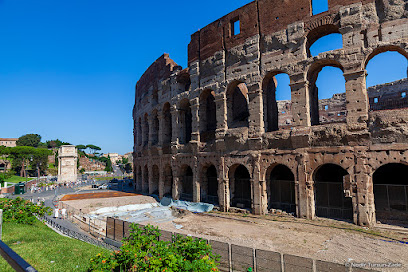
Caffè San Clemente
0.3 km
Experience the charm of Caffè San Clemente in Rome, where authentic Italian flavors meet a cozy atmosphere.
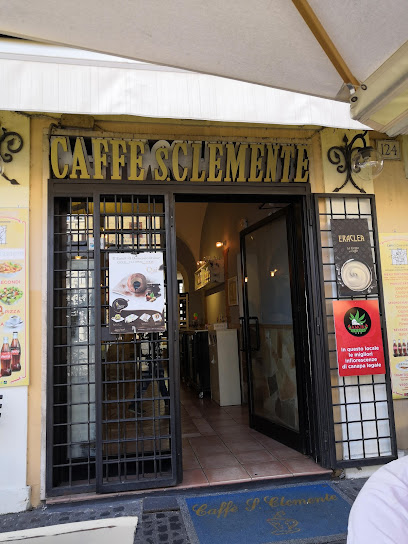
Largo della Polveriera
0.3 km
Discover the enchanting Largo della Polveriera, a charming town square in Rome filled with history, culture, and a taste of authentic Italian life.

Le Terrazze al Colosseo
0.3 km
Experience the best of Italian cuisine with stunning views of the Colosseum at Le Terrazze al Colosseo in Rome.

Essential places to dine
Aroma
0.1 km
Experience exquisite Italian dining at Aroma with stunning views of the Colosseum in Rome.

Il Salotto del Colosseo
0.1 km
Experience authentic Italian cuisine at Il Salotto del Colosseo, where every dish tells a story amidst stunning views near Rome's historic landmark.
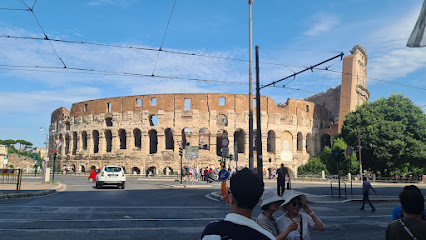
RoYaL Art Cafè
0.1 km
Discover RoYaL Art Cafè - where exquisite Italian cuisine meets artistic ambiance near Rome's historic Colosseum.

Ristoro Della Salute
0.1 km
Experience authentic Italian cuisine at Ristoro Della Salute, just steps from Rome's Colosseum - where tradition meets inclusivity.

Divinostilia food&winebar
0.1 km
Experience authentic Italian flavors and exquisite wines at Divinostilia Food & Wine Bar in the heart of Rome.

Ristorante Caffè Martini & Rossi
0.2 km
Experience exquisite Italian cuisine at Ristorante Caffè Martini & Rossi with stunning views of the Colosseum in Rome.
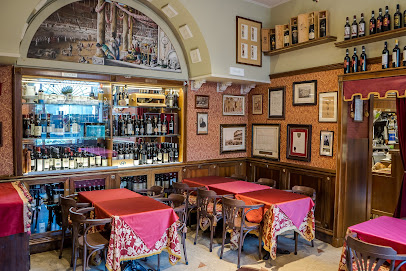
Pasqualino Al Colosseo srl
0.2 km
Discover authentic Italian cuisine at Pasqualino Al Colosseo, where every dish tells a story against the backdrop of Rome's historic landmarks.

Hostaria Al Gladiatore
0.2 km
Experience authentic Italian dining at Hostaria Al Gladiatore near Rome's iconic Colosseum - where tradition meets flavor.

Contrario. Vineria con Cucina.
0.2 km
Discover Contrario: A top Italian dining destination in Rome offering innovative dishes and an extensive wine selection.

Osteria Angelino dal 1899
0.2 km
Experience authentic Roman cuisine at Osteria Angelino dal 1899 - where tradition meets flavor in every dish.
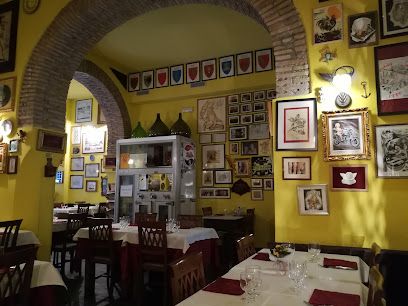
Hostaria da Nerone
0.3 km
Experience the essence of Rome at Hostaria da Nerone with authentic dishes that celebrate Italy's rich culinary heritage.
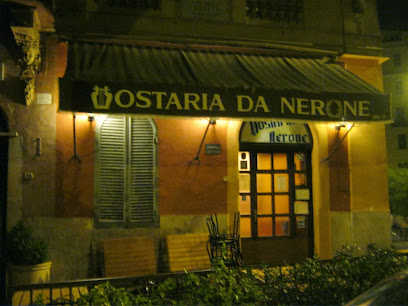
Ce Stamo A Pensà
0.5 km
Experience authentic Southern Italian cuisine at Ce Stamo A Pensà in Rome—where every dish tells a story.

Iari The Vino
0.6 km
Experience authentic Italian cuisine at Iari The Vino in Rome - home to exquisite ravioli and warm hospitality.
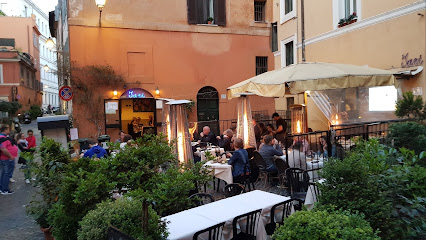
La Forchetta d´Oro
0.6 km
Experience authentic Roman flavors at La Forchetta d'Oro, where traditional Italian cuisine meets warm hospitality in the heart of Rome.
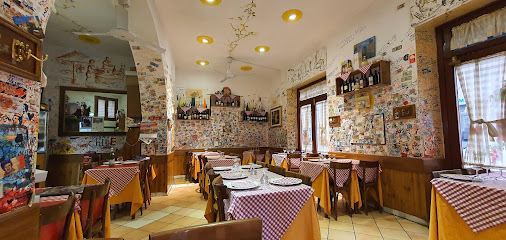
Non c’è trippa pe’ gatti
0.6 km
Discover authentic Italian flavors at Non c’è trippa pe’ gatti - a must-visit seafood restaurant in Rome's lively heart.
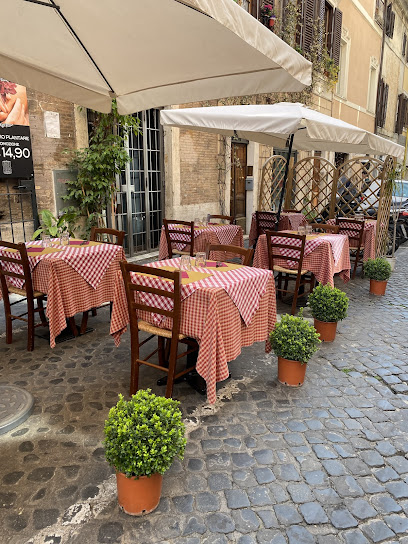
Markets, malls and hidden boutiques
King Size Vintage
0.5 km
Shop unique vintage clothing at King Size Vintage in Rome, where every piece has a story and timeless style awaits.

Hang Roma - Unconventional Leather Bags Handmade in Rome - Borse e Accessori In cuoio
0.5 km
Discover the charm of Italy through exquisite handmade leather goods at Hang Roma, a premier destination for fashion enthusiasts and souvenir hunters alike.

Civico 5 abbigliamento uomo
0.6 km
Explore Civico 5, Rome's premier men’s clothing store, featuring stylish apparel and accessories that blend modern trends with classic Italian elegance.
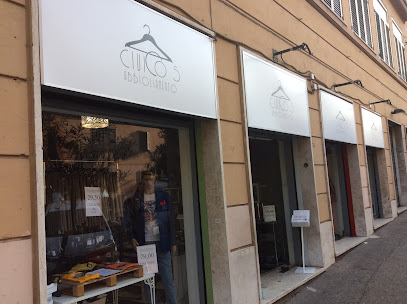
The Oliver wardrobe
0.6 km
Discover unique vintage and baby clothing at The Oliver Wardrobe, a charming used clothing store in the heart of Rome.

Suede
0.6 km
Discover exquisite men's footwear and stylish clothing at Suede, your premier shopping destination in the heart of Rome.

Grezzo Raw Chocolate
0.7 km
Discover the exquisite flavors of Grezzo Raw Chocolate, an artisanal haven for passionate chocolate lovers in the heart of Rome.
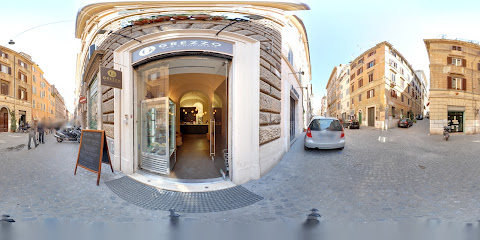
SUFIR
0.7 km
Discover SUFIR in Rome: your ultimate destination for exquisite leather goods, handcrafted handbags, and stylish dresses.

Boutique dei Serpenti - Borse e Bijoux Roma
0.7 km
Explore Boutique dei Serpenti in Rome for exquisite Italian handbags and jewelry, showcasing unique craftsmanship and timeless style.

Pifebo Vintage Shop
0.7 km
Explore Pifebo Vintage Shop in Rome for unique vintage clothing and accessories, where every piece tells a story of timeless fashion.

Souvenir Store
0.7 km
Explore a wide selection of unique souvenirs and gifts that capture the essence of Rome's rich history and vibrant culture.

PODERE VECCIANO
0.7 km
Discover authentic Italian flavors and exquisite wines at Podere Vecciano, the charming supermarket and grocery store in the heart of Rome.

Humana Vintage Roma
0.8 km
Explore the charm of vintage fashion at Humana Vintage Roma, where unique style meets sustainable shopping in the heart of Rome.

Kokoro
0.8 km
Explore Kokoro, a chic women's clothing boutique in Rome, showcasing unique styles and quality fashion for every occasion.

Blue Goose
0.8 km
Explore a vintage clothing haven in Rome's heart, where every piece tells a story and fashion meets history.

Pulp vintage
0.8 km
Discover timeless fashion treasures at Pulp Vintage, a unique clothing store in the heart of Rome, where each piece tells a story.

Essential bars & hidden hideouts
The Court Bar. Palazzo Manfredi
0.1 km
Experience the epitome of Roman elegance at The Court Bar, where handcrafted cocktails meet stunning views of the Colosseum.

Colosseum Bar
0.1 km
Discover Colosseum Bar, where Rome's vibrant cocktail and coffee culture come alive in a stylish setting, perfect for tourists seeking local flavors.

Coming Out
0.1 km
Discover the vibrant atmosphere of Coming Out, a renowned gay bar and restaurant in Rome, where inclusivity and nightlife come together.

Oppio Caffè
0.2 km
Experience the authentic taste of Italy at Oppio Caffè, a delightful café in Rome offering exquisite dishes, refreshing cocktails, and a vibrant atmosphere.
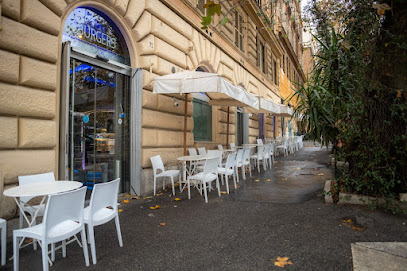
Enoteca Colosseo
0.3 km
Experience the finest Italian wines at Enoteca Colosseo, a charming wine bar in the heart of Rome, blending culture, flavor, and ambiance.

Voodoo Bar
0.4 km
Experience the vibrant nightlife of Rome at Voodoo Bar, known for its eclectic cocktails and lively atmosphere.

Caffè Roma
0.4 km
Experience the charm of Caffè Roma - a cozy coffee shop near the Colosseum, perfect for a delightful break in Rome.

The Race Club
0.5 km
Experience the elegance of The Race Club, Rome's premier cocktail bar, where expert mixology meets luxurious ambiance for an unforgettable night.

Drink Kong
0.5 km
Experience innovative cocktails in a stylish atmosphere at Drink Kong, Rome's premier cocktail bar, perfect for an unforgettable night out.

Ri.ONE RoofTop Cocktail bar
0.6 km
Discover the best views and unique cocktails at Ri.ONE RoofTop Cocktail Bar, your perfect escape in the heart of Rome, Italy.

The Barber Shop
0.6 km
Discover The Barber Shop - Rome's vibrant cocktail bar offering expertly crafted drinks and a lively atmosphere in a unique speakeasy setting.

Shamrock
0.6 km
Experience the charm of an Irish pub in Rome, where delicious food, refreshing drinks, and a lively atmosphere await you near the Colosseum.
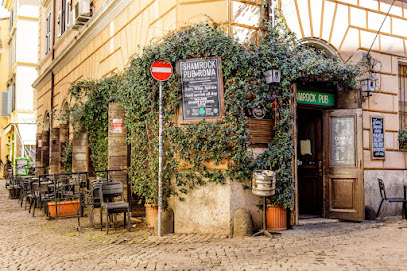
Ice Club Roma
0.7 km
Experience the coolest nightlife at Ice Club Roma, where unique cocktails and vibrant parties await you in the heart of the Eternal City.
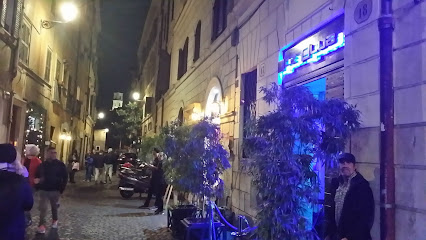
Blackmarket Hall
0.7 km
Discover Blackmarket Hall: A vibrant cocktail bar and bistro in Rome offering delicious food, exquisite cocktails, and live music in a lively atmosphere.

Ex Galleria
0.7 km
Discover the perfect fusion of cocktail culture and contemporary art at Ex Galleria, Rome's hidden gem for an unforgettable night out.




